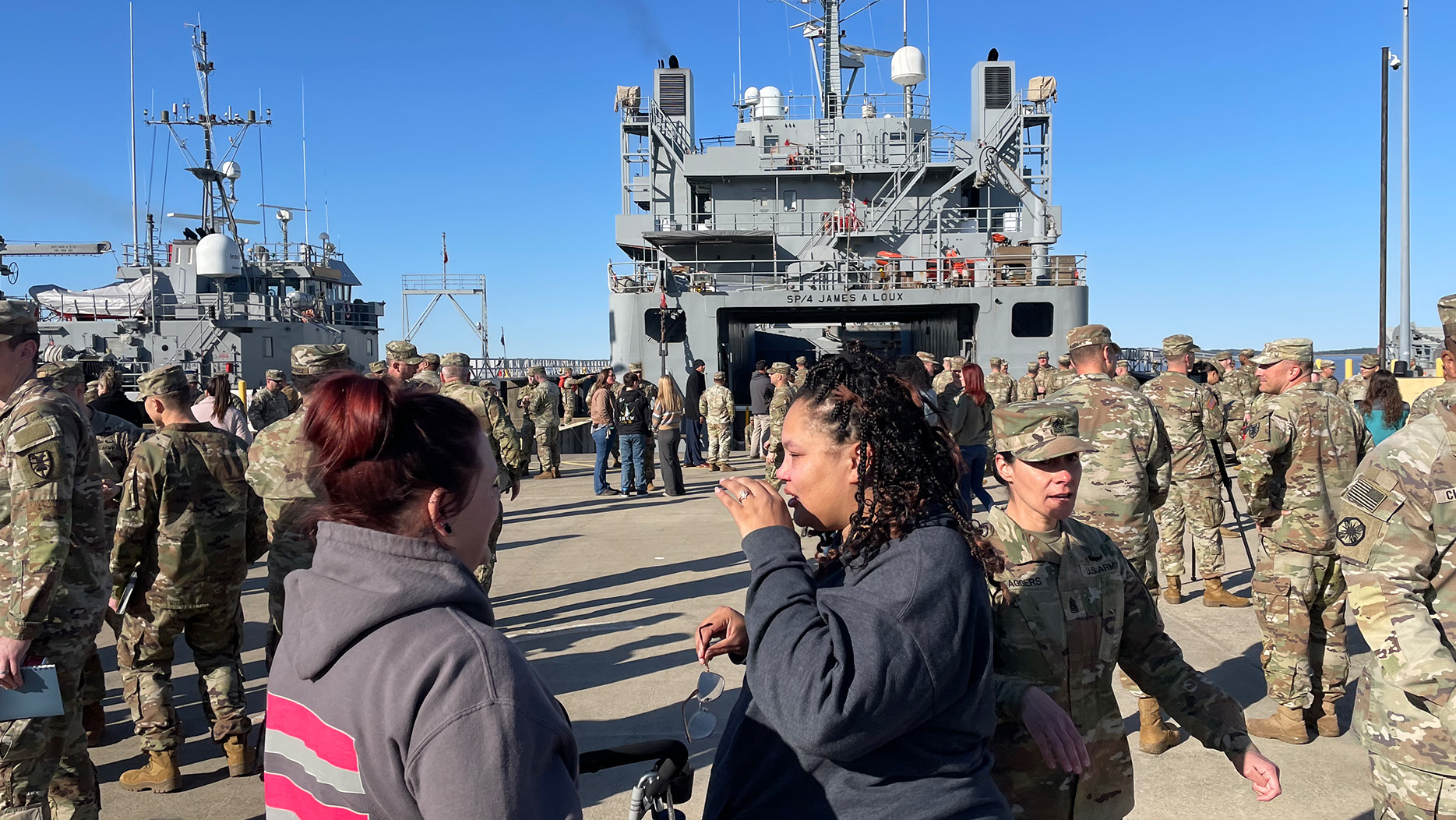The first Army vessel from the 7th Transportation Brigade left the dock at Fort Eustis less than two days after President Joe Biden announced in his State of the Union Address that the U.S. would build a mobile pier to ferry aid to Gaza.
When the last boats cast off from Virginia, there were still large, unanswered questions about the military-led effort.
The relatively unknown Army armada set sail for its high profile mission to deliver food aid to Gaza.
“This is the U.S. Army watercraft’s moment and we are up for it. The U.S. and the world will see our humanitarian capability on display and in action forward,” said Col. Sam Miller, commander of the unit.
“I'm primarily focused on my capabilities getting out of here and then getting there and getting this built, and then they'll give me further orders from there,” Miller said.
It will take the small, flat-bottomed Army boats a month to reach the Eastern Mediterranean. The Navy is also bringing a football-field-sized floating dock to be assembled three miles out at sea, according to the Navy.
Navy ships, and potentially vessels from non-governmental organizations, will bring supplies onto the dock. Trucks can then drive onto barges that will then take them to a pier built to the shore.
Naval Beach Group 2, based in Coronado, California, will bring 260 sailors, including some from Joint Base Little Creek/Fort Story. The operation will be directed by the Army, which will have 500 soldiers in the waters off Gaza.
The Army has built mobile piers since World War II, when they were island-hopping in the Pacific with the Navy and Marines.
The 7th Transportation Brigade just returned from an exercise in Australia. Two years ago the unit built the same temporary pier structure during an exercise at Joint Base Langley/Fort Eustis.
Before setting sail Thursday, the USNS Roy P. Benavidez was being loaded with Army Equipment in Newport News, much of it being floated down the James River on a barge like the ones that will be used in the Gaza operation.
“So we have quite a few different entities, different personnel, and we are working 24/7 to ensure we can get there as quickly as possible,” said Maj. Katie Keller, with the Army military Service Deployment and Distribution Command.
The Army and Navy units are trained for rapid response, though it will be weeks before they deliver the first pallet of food to people starving in Gaza.
Tim Hoffine, quality assurance and methods adviser on the United States Famine Early Warning Systems Network, told NPR that hunger is already widespread and famine is imminent in the Gaza region.
The U.S. built something similar for a relief effort in Haiti in 2010 following a devastating earthquake, but that wasn’t a potential war zone.
President Biden has committed to have no U.S. troops set foot in Gaza. The U.S. is trying to line up a private contractor to anchor the pier to the beach, then set up a distribution hub for the aid supplies. The cargo will have to be inspected before it arrives on the dock. Empty containers will have to be inspected again before the trucks can be loaded back onto the Army’s mobile pier.

Army and Navy officials agree the details will have to be in place before the operation can begin supplying food to Gaza.
“I'll start by saying this, our number one priority for every deployment is the protection of our soldiers. That is number one,” said Army Brig. Gen. Brad Hinson, Commander of 3rd Expeditionary Sustainment Command, based at Fort Liberty, N.C.
A bipartisan group of members of Congress, including Virginia Sen. Mark Warner have also urged the White House to provide more details before the equipment arrives in the Eastern Mediterranean.
Navy and Merchant Marine ships carrying military equipment also left last week.
The larger ships can cross the Atlantic in half the time of smaller Army boats. President Biden promised to have the operation running by early May, which gives the U.S. time to figure out some of the details, and push for a ceasefire.
“Obviously a ceasefire would be welcome in Gaza in order to be able to bring humanitarian aid to the beach in a more successful manner,” said Navy Secretary Carlos Del Toro, who was in Norfolk for the homecoming of the USS Bataan, which returned from the region last week.
“This is a plan that's being laid out right now in close cooperation with Israel and with the Army as well,” Del Toro said. “So I have every confidence that we will be providing the necessary security that will be necessary to protect our sailors, while at the same time provide the international community that really needs to come to the help of Gaza.”
The Air Force has airdropped more than 35,000 meals and 31,000 bottles of water into northern Gaza. While the easiest solution would be to allow more food in by land to the war-torn region, the Army estimates a mobile pier operation would allow the U.S. to bring in 2 million meals a day.





